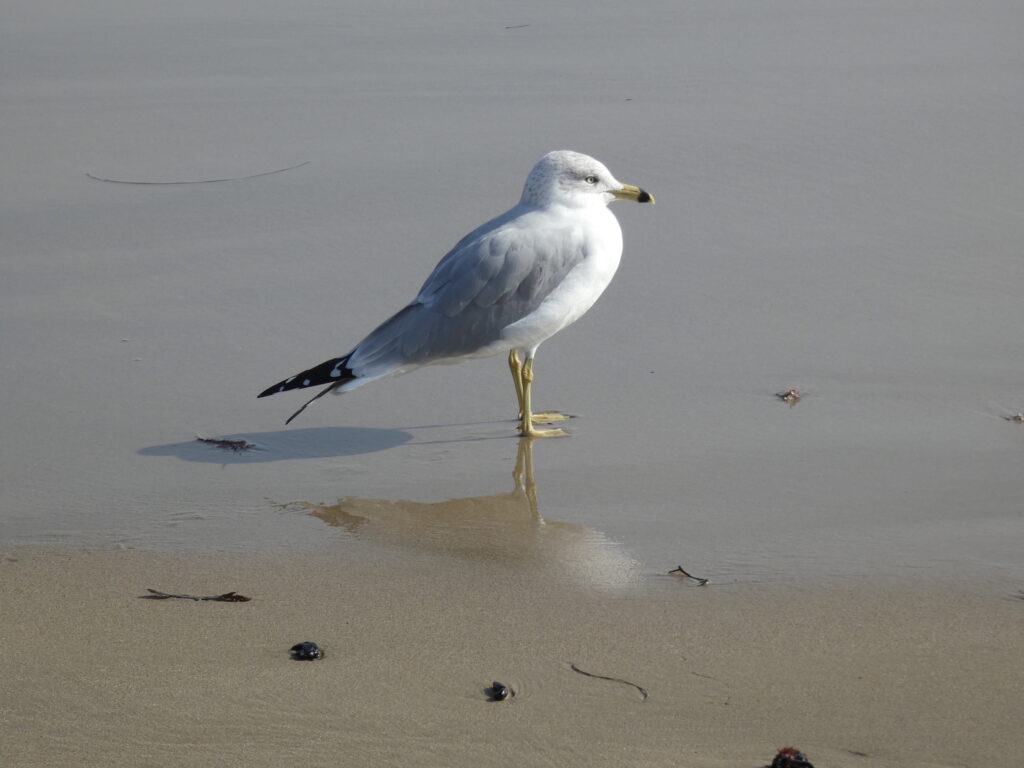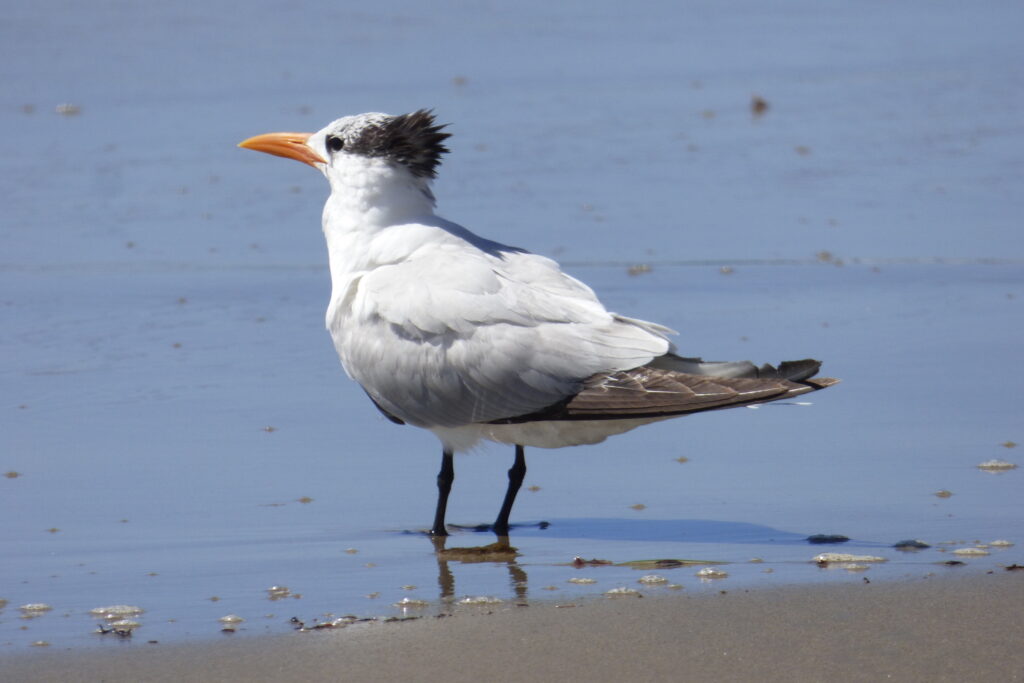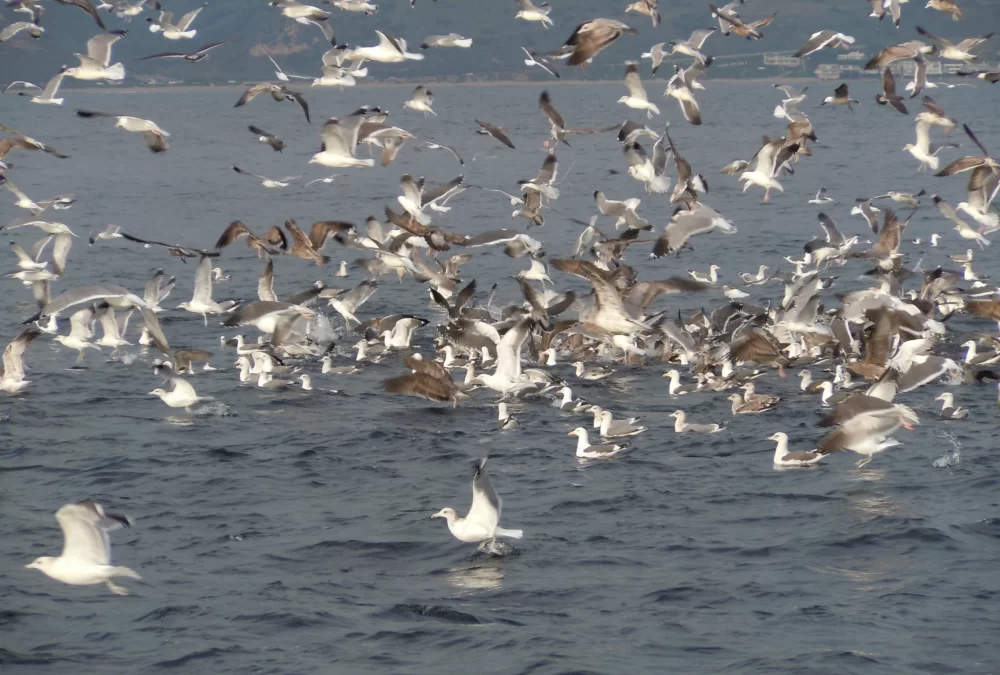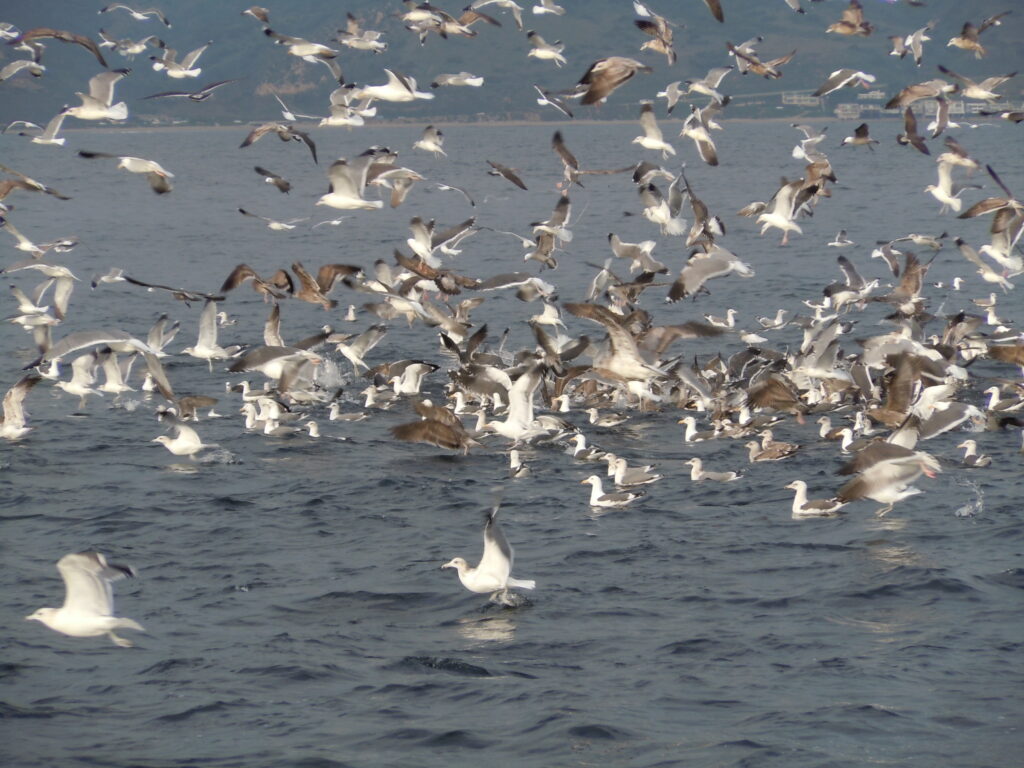
I met a gull I hadn’t seen before when I was out shooting photos for the article on winter beach walks in this issue of the Topanga New Times. It was a small gull, with a petite bill, soft gray feathers, and a permanently grumpy expression. It turned out to be a mew gull, a species not as common as the larger gulls but not rare, either. It made me think how often we take gulls for granted as part of the seascape, lumping them together as simply seagulls and not thinking about them except when they are attempting to steal a sandwich or when the sun turns their wings to silver and they take our breath away with their beauty of their acrobatic flight.
I’m guilty of that. I can tell a Western gull from a California gull, and a Heermann’s gull from either of those, but there are a surprising number of gull species hiding in plain sight, like that mew gull, that I’ve never recognized as anything other than a generic seagull.
The big dark gray and white gull eyeing your lunch and preparing a snatch and grab maneuver? That’s probably a Western gull. It’s the biggest, boldest and most audacious of the gulls that make their home on our coast, it’s also the most common gull species here. This is a fearless, in-your-face gull. The one you find sitting on top of your car, or investigating the contents of your beach bag.
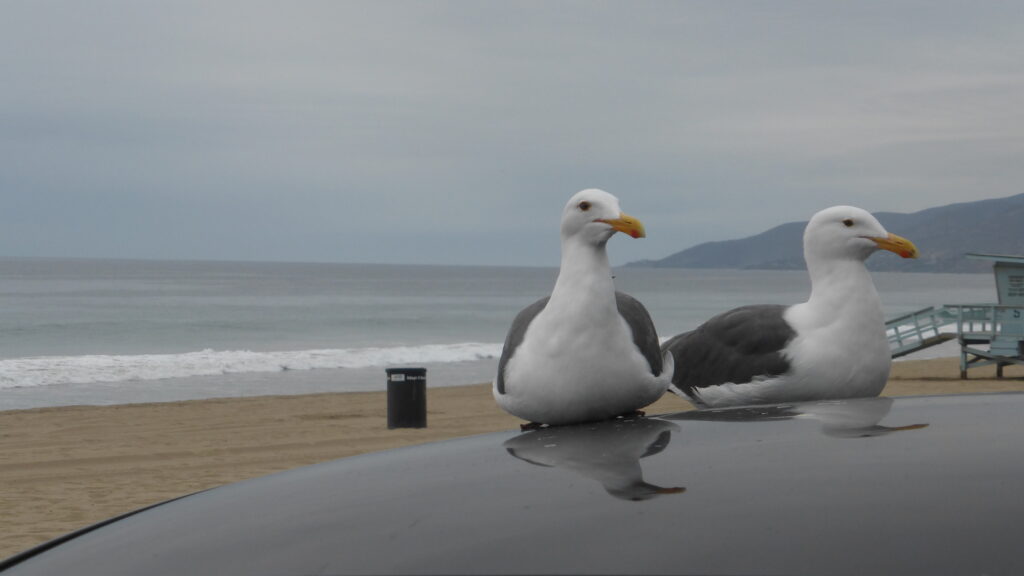
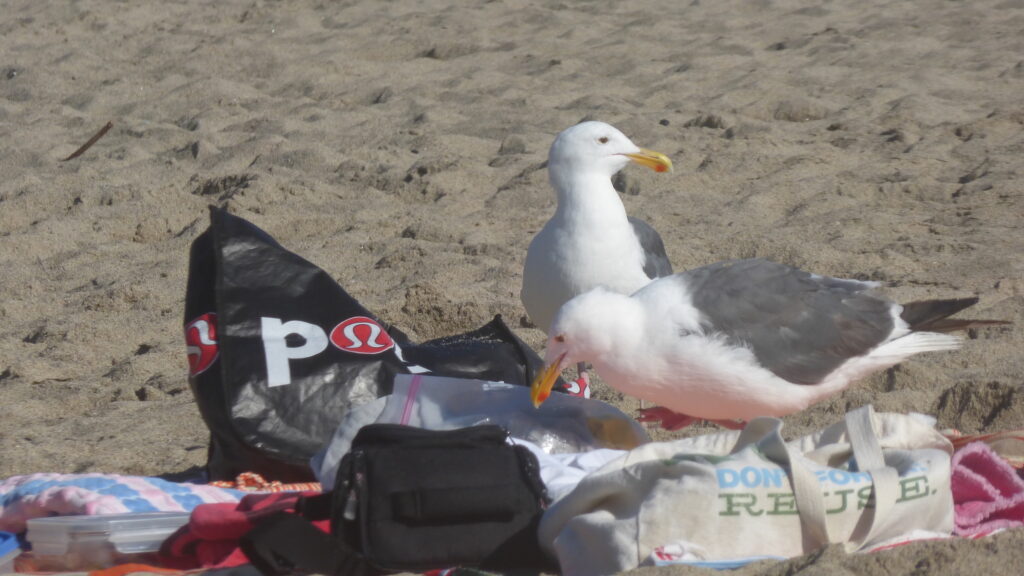
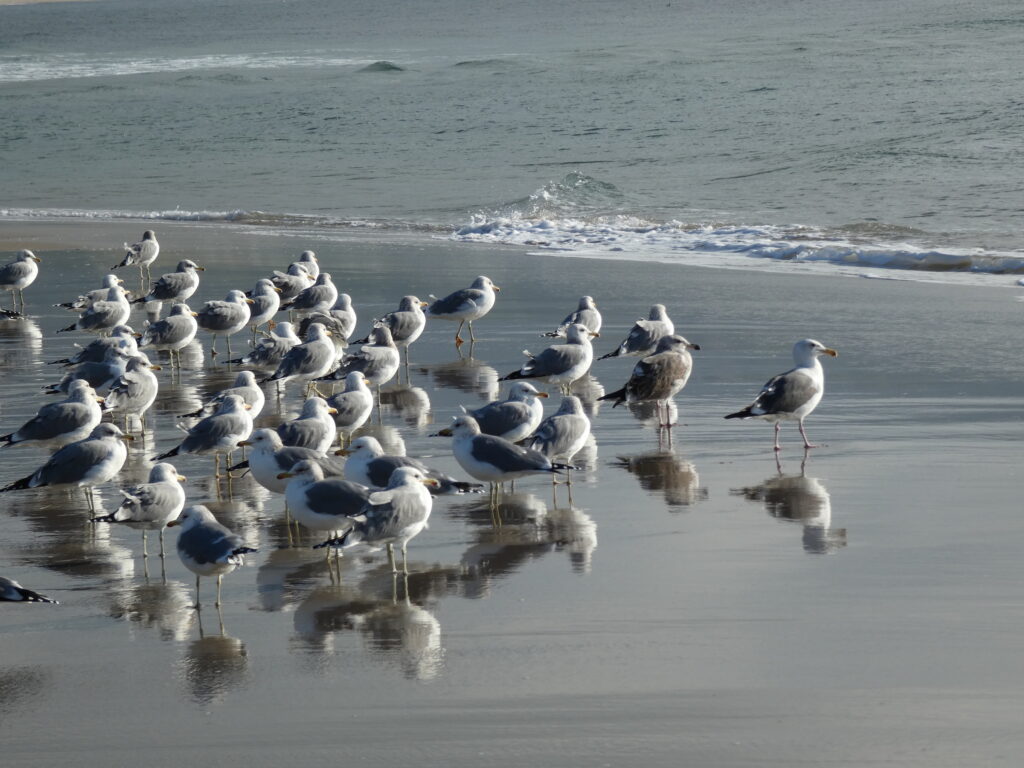
Herring gulls look very much like California gulls, but they are a little bigger, have light yellow eyes and grayish pink legs. They can be hard to spot because they often congregate with other gulls, but they are still fairly common.
Ring-billed gulls are aptly named, with a distinctive dark ring around the end of their bills. Like the herring gull, this gull has pale yellow eyes. This gull is more of a loner. It’s rare to see more than one or two, but they often congregate with other gull species.
Heermann’s gull is the most dramatic gull on the beach. Adults have charcoal and white feathers and deep orange bills with a dark tip that looks like it was dipped into ink. This is an endemic species that spends the winters on California beaches and only breeds on Isla Rasa, in the Gulf of California. This is a commonly seen species on Malibu beaches but its population numbers only around 350,000. Like most gulls, this species is monogamous. Each pair returns every spring to raise their young on that one small island off the coast of Mexico.
Mew, Sabine’s and Bonaparte’s gulls are smaller than the other gulls and less common. The mew gull has that distinctive small bill, yellow eyes, and yellow feet. Sabine’s gull has a black head and black feet. Bonaparte’s has a black head during breeding season, but is usually seen during the winter here, when it has round gray spots on its face like an old fashioned clown.
Terns are close relatives of the gulls and often associate with gulls on the beach. Royal terns, with their punk mohawk and raucous calls, are the most common species here; while the tiny California least tern is the smallest member of the family. This is an endangered species that once used to breed along our coast and is now on the brink of extinction.
Some gull species can hybridize, complicating the ID process, while juvenile gulls of all species can be an ID challenge even for experts—young birds retain their protective gray and brown blotches for several seasons, but a good guidebook, a website or app like Cornell Bird Lab’s allaboutbirds.org and iNaturalist can help.
There are nearly 50 species of gulls worldwide, and they make up a large segment of the local seabird population. Gulls are an essential part of beach life, always present. They deserve a second look, and not just when they have designs on our lunch.
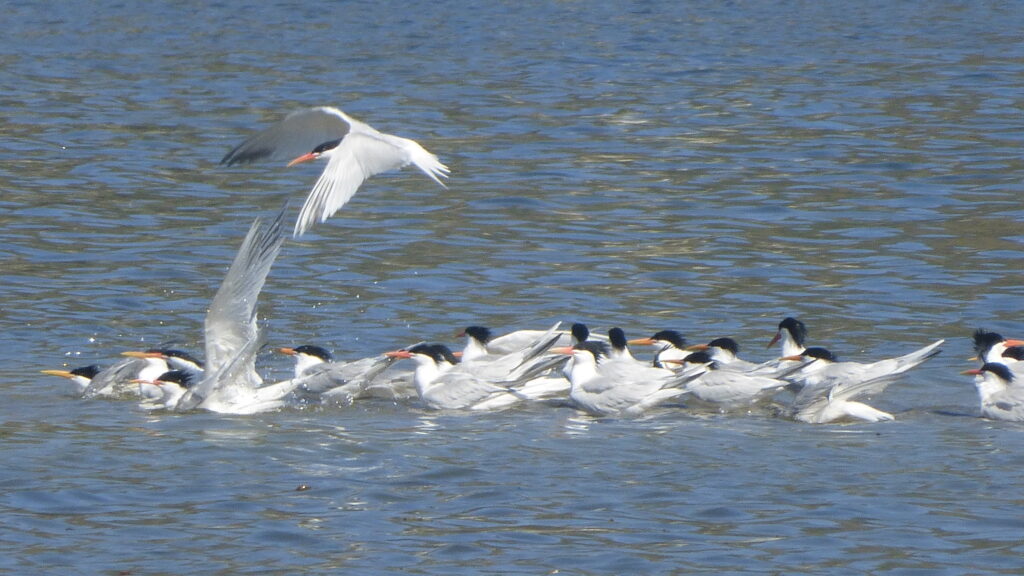
We can help gulls, and species like the least tern, by leaving our dogs at home when we visit the beach and by picking up after ourselves. Gulls may have a taste for bread crusts and potato chips, but they are much better off without human food, and plastic debris left behind by human visitors can be a major health risk for many types of seabirds.
These are special birds that make a successful living in one of the most changeable and challenging environments on earth. Many gulls have learned to adapt to the presence of humans, and also to coexist with other bird species—a visit to the Malibu Lagoon is like a visit to Jurassic Park, birds of all species and sizes peacefully—for the most part—coexisting with each other, side by side. Learning to identify the different species in this family helps bring each into focus as something more than just part of the scenery.
